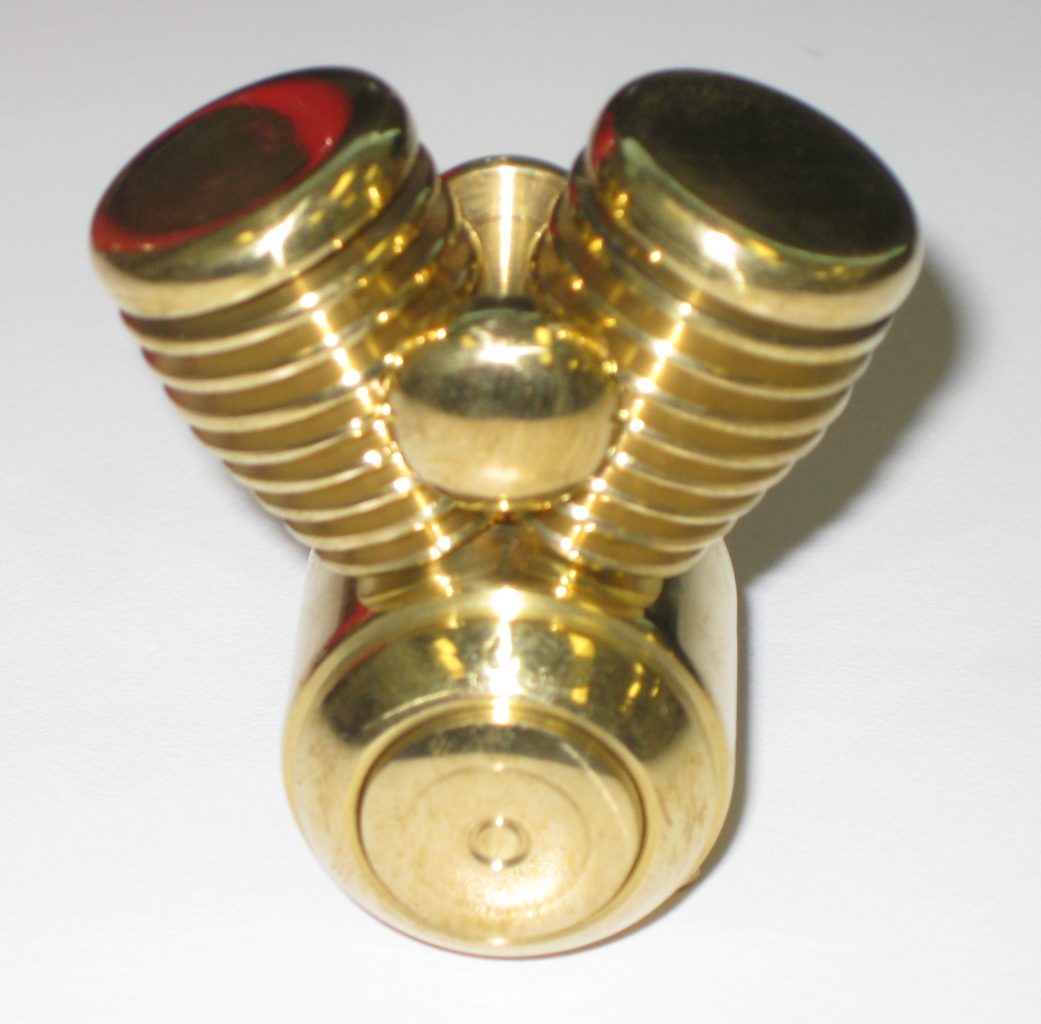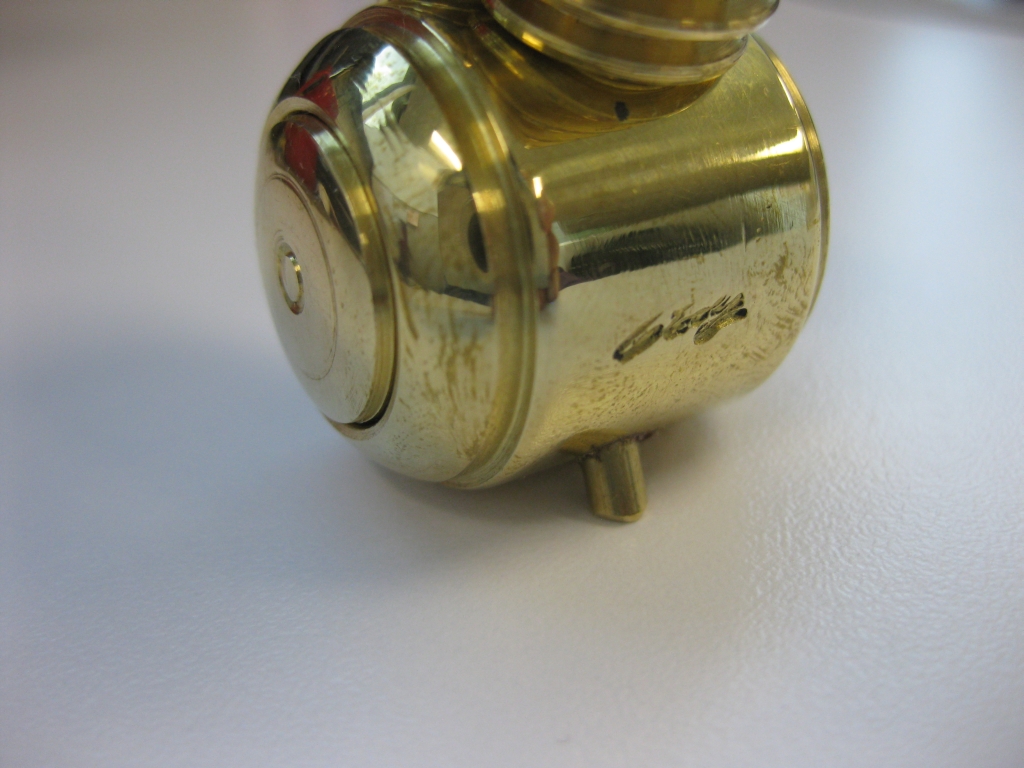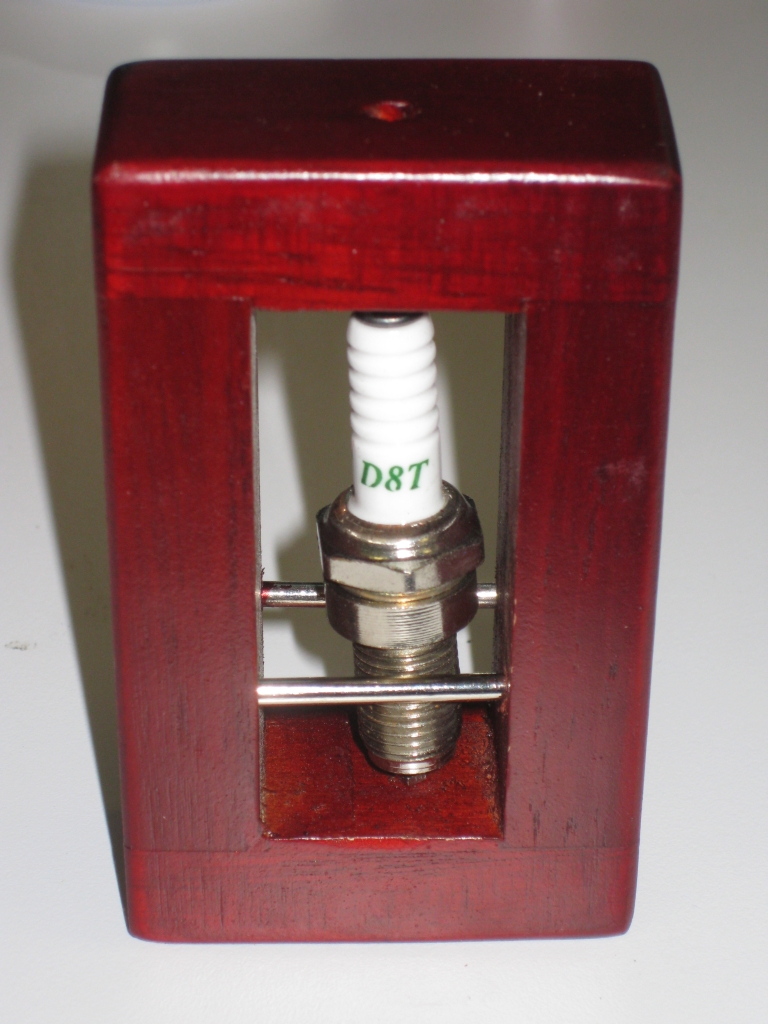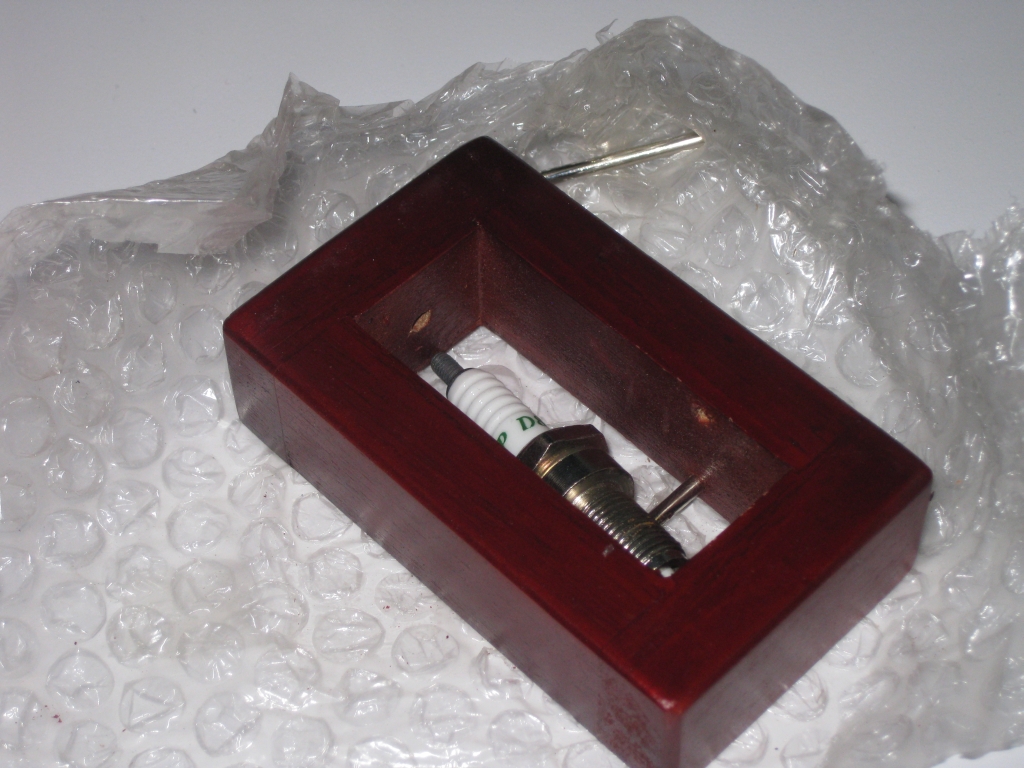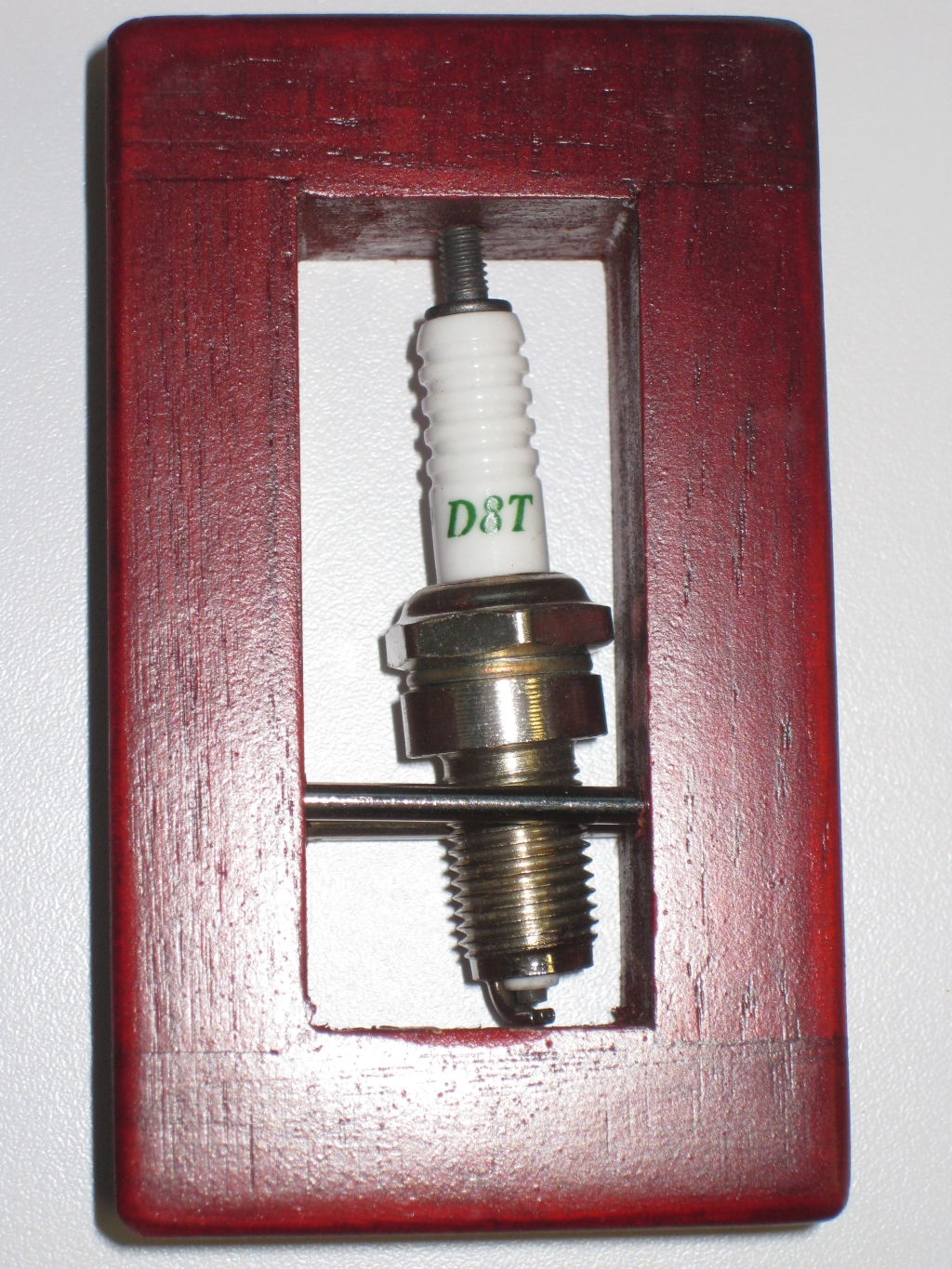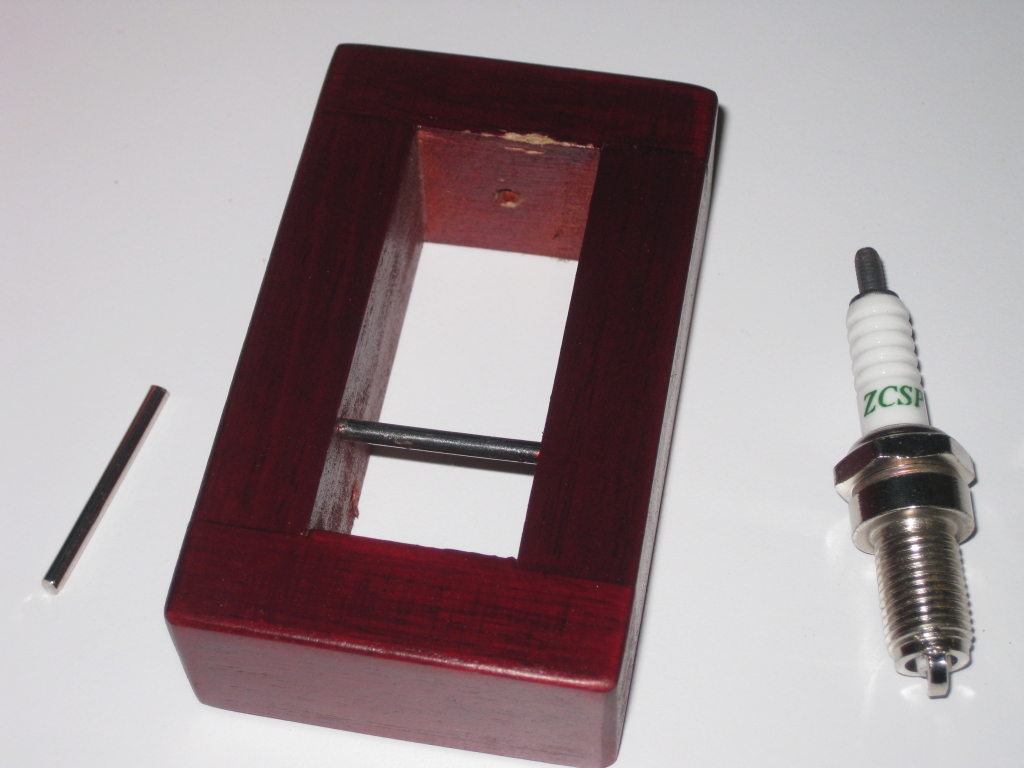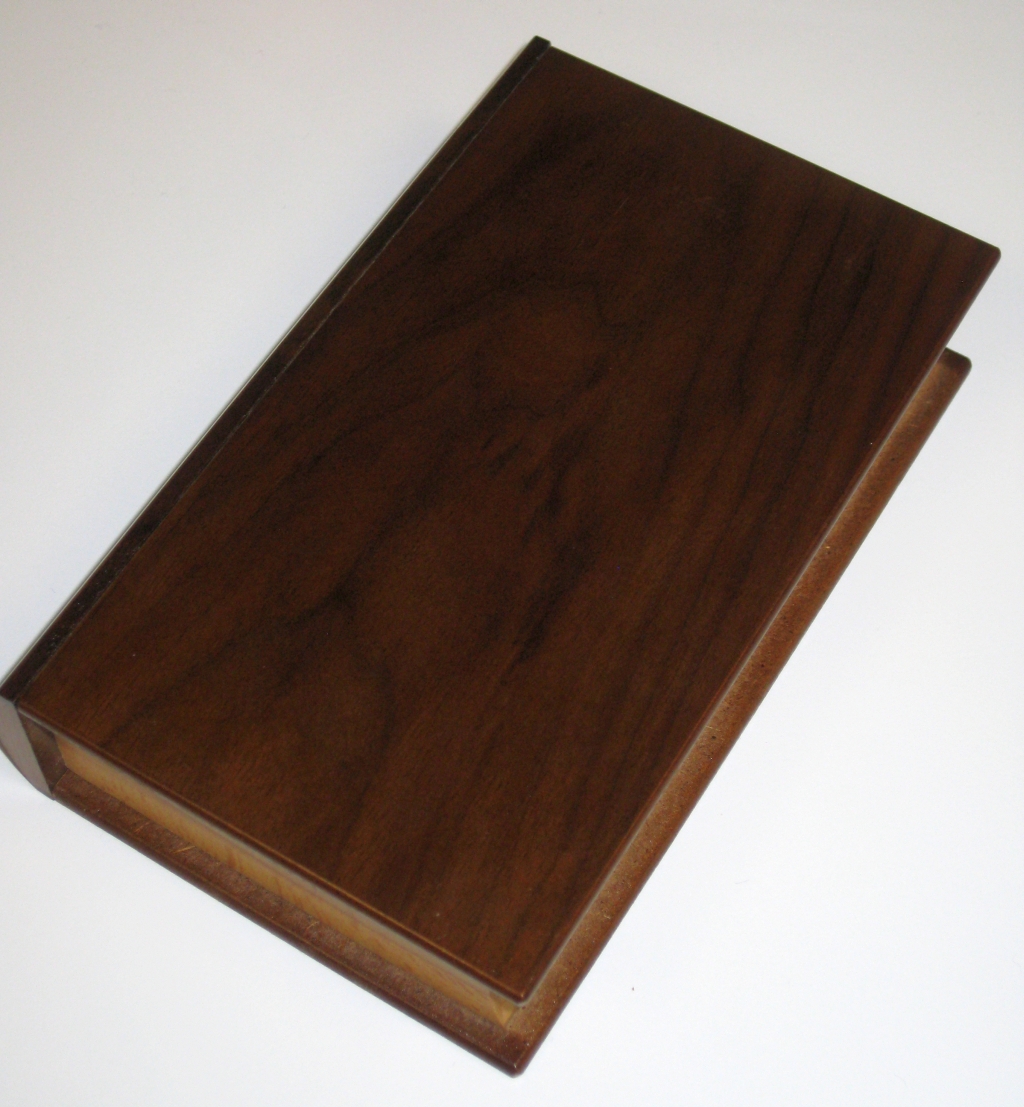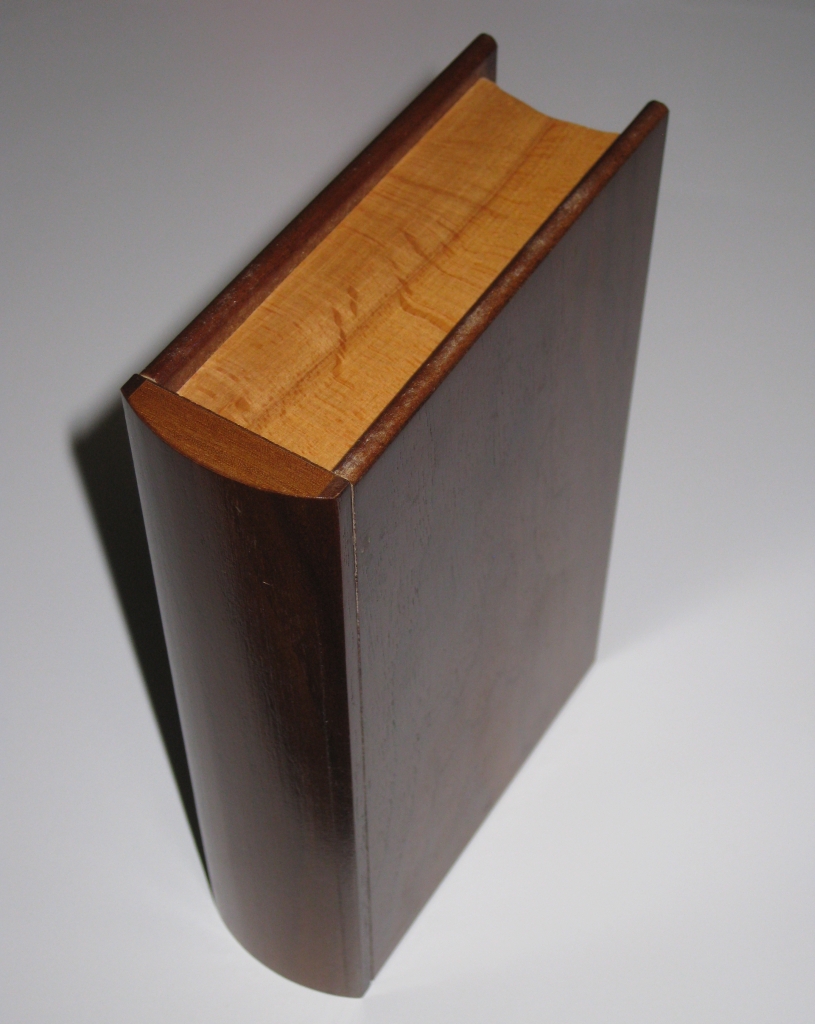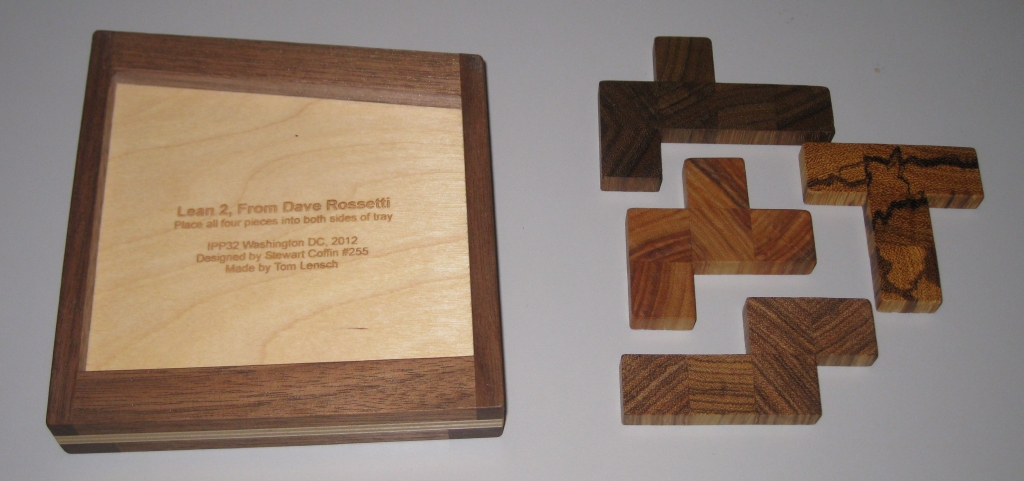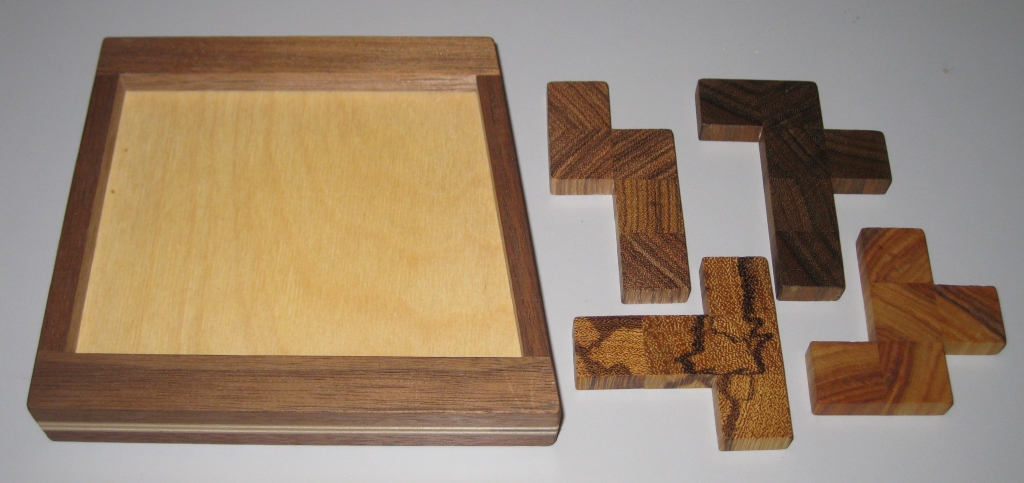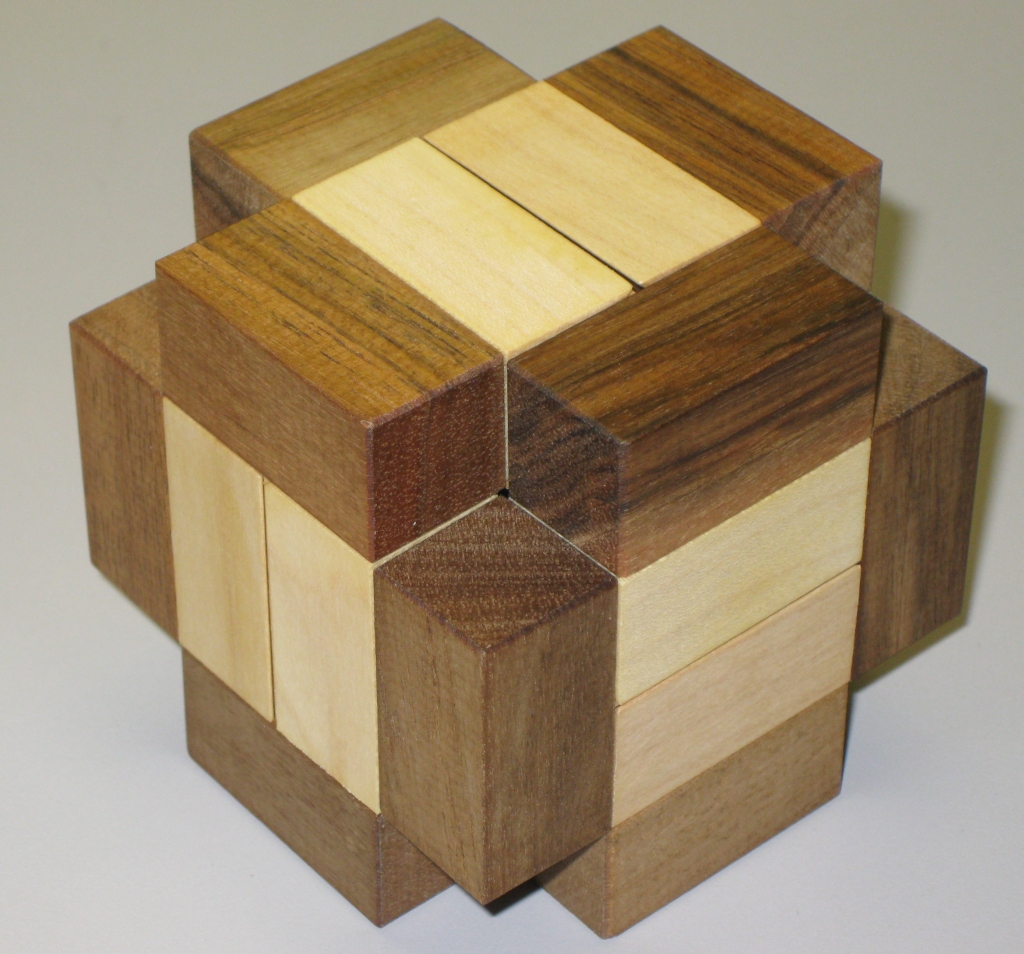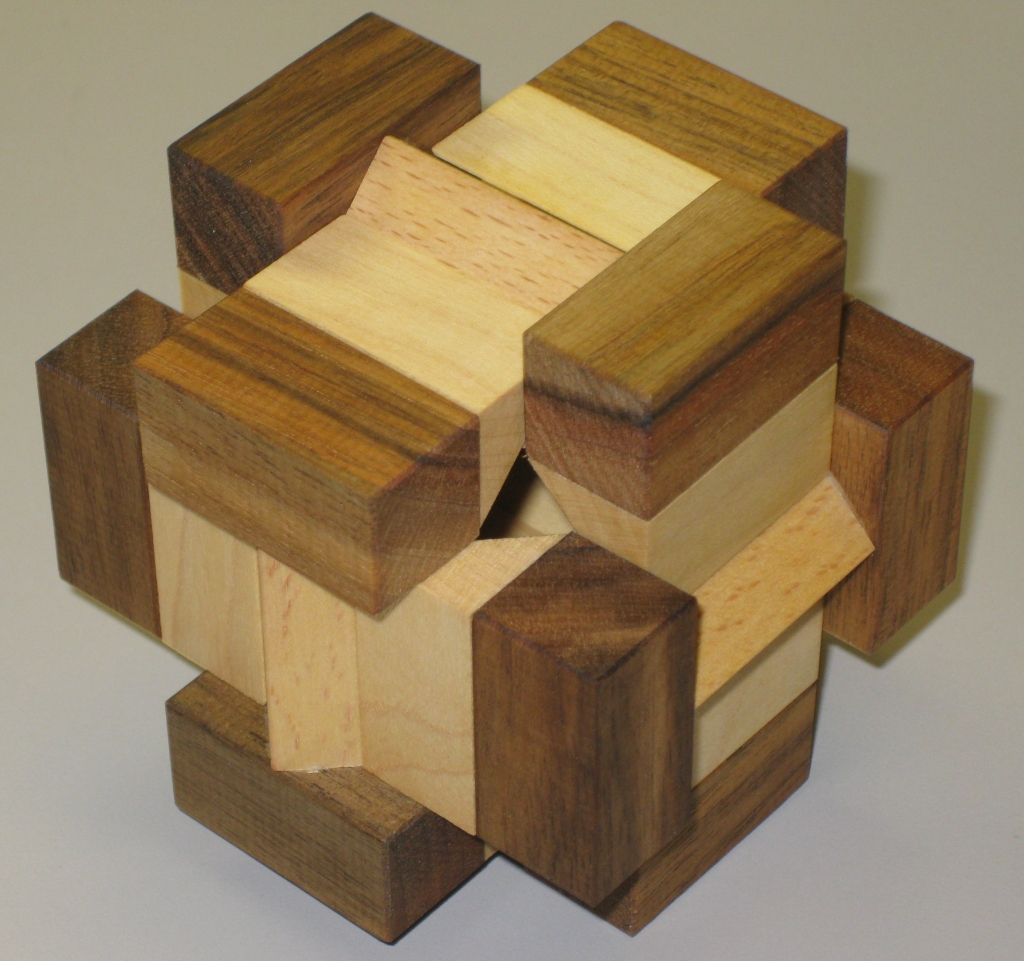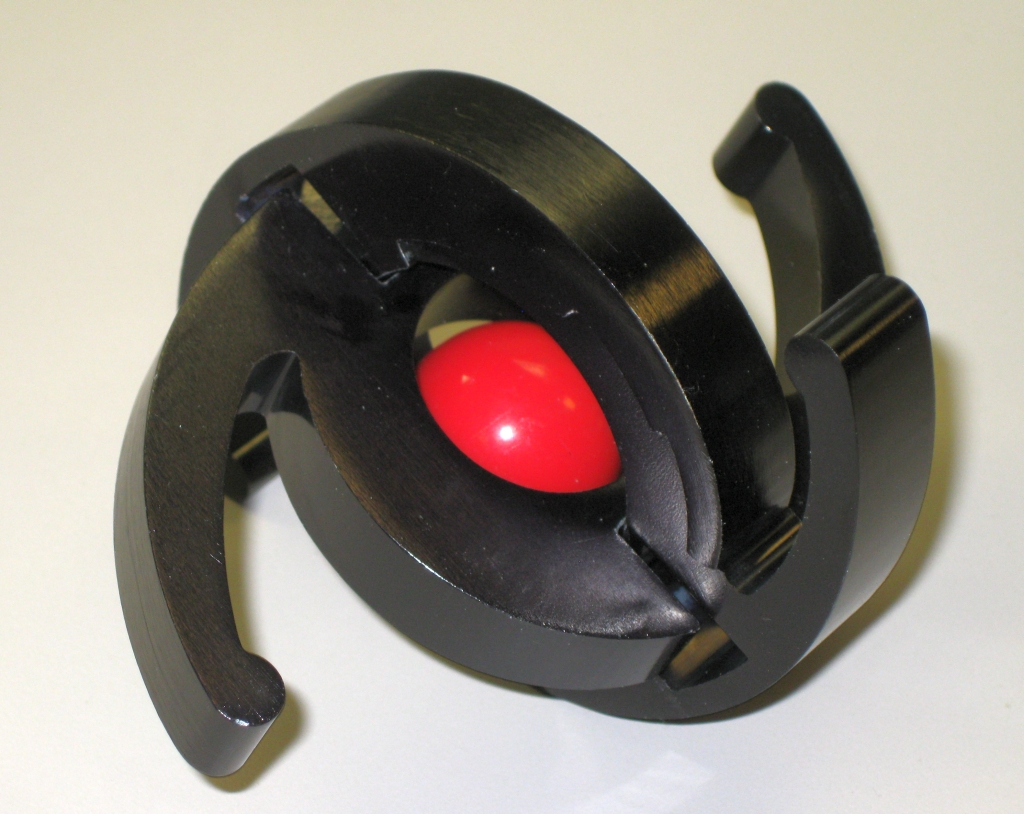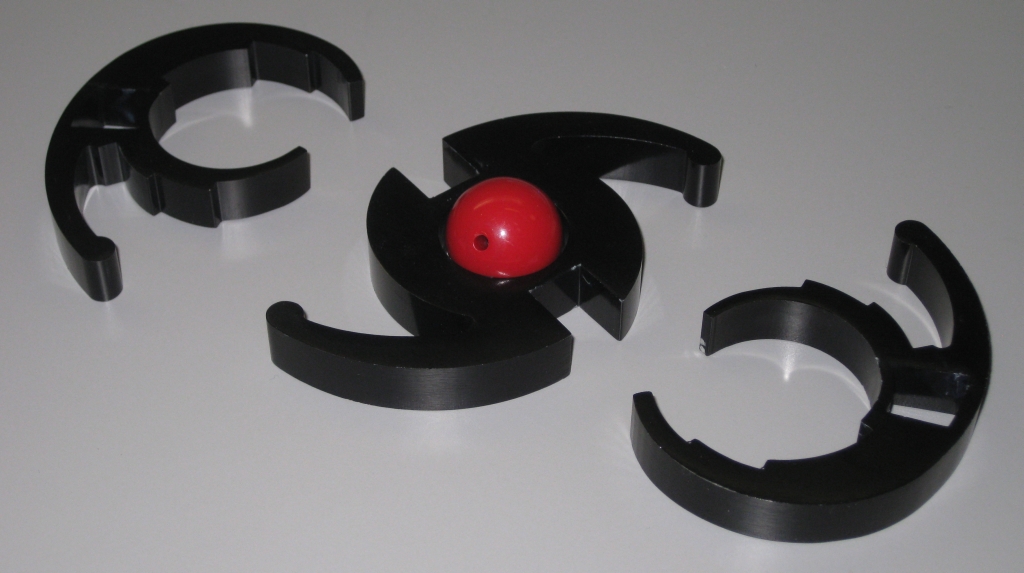In today’s world of computer controlled machinery and high-tech precision machining, there are few craftsmen left who are able to create something in metal by hand, in amazing detail and precision, and even fewer who use those skills to make puzzles. Rocky Chiaro is one such master craftsman, and I’m pleased to say that having met the man himself at IPP and spent some time talking to him about his puzzles, and playing with some of his bolts, that I now have one of his puzzles in my collection… and it won’t be the last!
This stunning puzzle is a mechanical puzzle made to look like an early Harley Knuckle Head Motor. Now as a biker this appeals to me, and as an engineer who doesn’t appreciate engines. Now granted I should apologise to Rocky as I have played with this puzzle, and I didn’t polish it before taking the pictures, so it’s covered in fingerprints!
Hand made with a great eye for detail, this 2″ high motor is not the most challenging of the puzzles Rocky makes, but it is beautiful. Having said that, I did find the first move very quickly, but didn’t get much beyond that for a while. There’s plenty to poke and prod at, and a few things which hint at movement, but nothing really moves. I had a fair idea as to what should happen next but it took me far too long to actually execute it. That has to be attributed to the amazing tolerances in the puzzle. It’s made so well as to give nothing away, and really is a nice puzzle to solve.
As you can see Rocky has signed his work by engraving the side of the puzzle. I really should get this polished back up to the level that it arrived in!
I don’t think it will keep experienced puzzlers stumped for long, but I’m very glad to have it in my collection. As I mentioned earlier, I’ll be ordering quite a few more puzzles from Rocky in the future, so keep an eye out for some thoughts here. If you’re interested in Rocky’s keys or bolts, then a fair few of my fellow bloggers have written about them, so go check out their pages!
